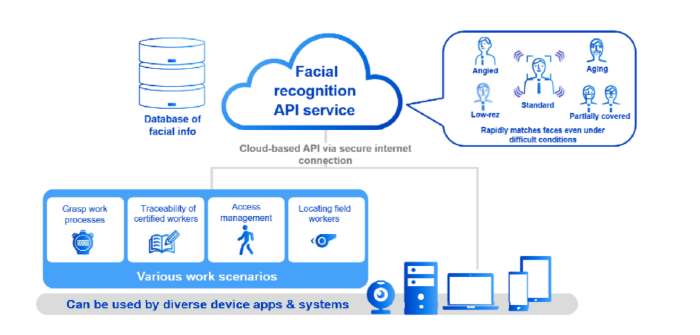Panasonic Corporation is launching an application programming interface (API) for its facial recognition technology in Japan.
The new API enables deep learning-powered facial recognition technology via a cloud-based service. Among its strengths is a quantity generation method of recognizing the whole face and certain parts of the face through the integration of multiple deep learning technologies, and a proprietary Panasonic algorithm that performs a degree of similarity calculation method for matching faces and controlling errors caused by photographic conditions.
According to Panasonic, these features mean that its facial recognition technology can accurately identify faces even under difficult conditions, such as when the face is seen from an angle, in difficult lighting conditions or when it is partially covered by sunglasses or a surgical mask.
Panasonic’s deep learning-based facial recognition technology can now be used simply by opening this API, making it possible to incorporate the technology into customers’ smartphone applications, websites and building access management systems. This will enable entry/exit management at multiple business sites, streamline movement within offices or worksites, and prevent identity theft. The facial recognition API is a micro service within Panasonic’s μSockets B2B IoT service which is currently available in Japan.
By adding an API to its facial recognition service line-up, Panasonic is now able to offer its customers both on-premises and cloud-based solutions.


